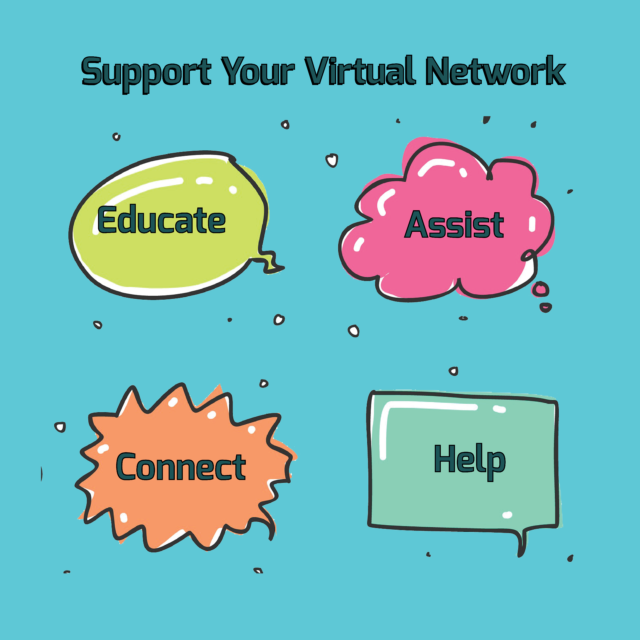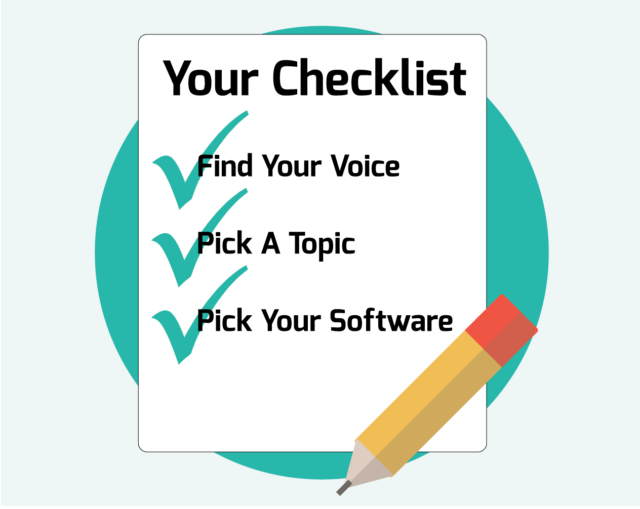20
May 2020
Host a Virtual Event & Build Strong Business Connections: Part I
Big trade shows are a thing of the past. Zoom and online meets are the “New Normal”.
Now is the best time to maintain connections and to build a strong community. Since business is still slow or at a standstill, many are suffering from fear, anxiety, illness, income, and profit loss. Make the best of your online community connections and organize a virtual trade show and retain some sense of normalcy.
This article will demonstrate how to put forth an action plan for your next online event. I’ll also show you how to use your social media channels as your best allies.
Start with the following…
“Social distancing” is now a way of life. People are confined to their homes, working virtually, and are looking to connect with followers and consumers. After all, we are social animals.
Making the best of an online “trade show”
Seriously how many Zoom calls have you been on this week? Five, seven? How about gathering all your zoom calls into one and call it a “Virtual Trade Show?” The business has to go on.
Let’s get started with the following?
-
- Find your angle: look to clients, contacts, or new trends that can help you find a hook for your virtual event.
- Check your social media Rolodex. Look for virtual connections relating to the trade show that was supposed to take place. Reach out to them and find out what their interests or needs are. Perhaps you can fill a void.
- Pick your channels. Once you know which social media platform they converge on, you can schedule your virtual meet-up on this channel.
#ProTip: Be sensitive to your followers and what they are experiencing. Don’t use a tragic event to shamelessly promote yourself at the expense of your followers.
What Value Can You Offer?
Start by evaluating the fit between your business and your connections. Look for ways to support your network with the following:
-
- Education: If you have a product or service now is the time to look for an educational angle. Build a curriculum that focuses on learning, add specialty tracks and individual sessions. Take advantage of online education methods.
- Assistance: See if your products or services can help other businesses in the present climate.
- Connect: Look for connections offering new products or services. How can you help their industry? Now is the time to share new ideas to build new industries online.
- Virtual: Look for ways to help your virtual connections. Host a virtual event that will interest new followers and clients.
As you investigate, ask yourself the following: What is happening in your industry? What are the latest trends? The answers will help you make educated decisions about how you want to position your conference experience. Based on what you have learned you can build a curriculum and start planning.
Get Ideas from Social Media
Once you’ve thought how to proceed with your virtual trade show, establish a conference culture. Decide how to position yourself and your company at the virtual event. It will also help you determine which social channel works best.
-
- Twitter for Research. I rely on Twitter as a social media platform for research and discovery of industry trends. Follow industry hashtags to get a bird’s eye view of your competition, the industry culture, and new ideas. You can learn a lot by observing tweets or posts and listening to past attendees. I collect all this information and connections in a Twitter list. Also, join Twitter chats and stay connected.
- Facebook for connections. Now more than ever, Facebook is the place to meet and share. Friends and connections are turning to the app for updates. Look for relevant groups and follow conversations. This will give you the inspiration to plan your event. Bounce some of your ideas off your friends to gauge interest in a virtual conference.
- Instagram for visual inspiration. Follow all hashtags relating to your industry. Here you get a visual view of the newest trends. Also, look for your competition. What are they doing? Get inspired by following past events. Look for branding ideas that will make your products and services sizzle.
- LinkedIn for the business climate. What is your industry doing? This the place to find out everything relating to B2B. Follow all company pages, see what they are sharing. Do a little fact-finding to get a sense of the industry business culture.
Now that you have done your homework, let’s get to the meat of your virtual conference.
Prepare Your Curriculum
Draw up an outline with salient points for your event. Find talking points to address your audience.
Many big trade shows were canceled this year and billions of dollars have been lost. Plan a good curriculum to address the present business climate and to find solutions.
Here are some curriculum suggestions:
-
- Find a way to use your products and services as a means to educate your audience. If you have a business that sells food, how about educating visitors on how to eat healthy during a pandemic?
- Discuss recovery and coping strategies for the present times. Offer scenarios with solutions. How-to’s, survival tips, and suggestions. For example: Find ways to help small businesses stay alive during this time. Tailor your event to be helpful rather than “salesy.” How about a meet-up on group social media “cleaning.” We never have time for this during regular work hours.
- Take an upbeat approach by being creative and offering new ideas moving forward. This is a positive slant and we could all do with positive approaches. How about discussing ideas for spring cleaning? This concept can work for any business that has overcrowded email or folders. Most of us do and never have time to clean up.
- We are all in this together so solutions for losses are always welcome. Offer suggestions and support for businesses that have lost and are confined at home.
Make a checklist of needed items:
- Find a theme for your virtual event. Brand your event with your company’s visuals and taglines. Use it for any slides and screen shares. If you have sponsors, integrate their logos and mention the company often throughout the meeting.
- Organize your software. Which software will work best for your event? Find software that’s easy for your attendees to use.
- Pick a topic. Find a topic that’s timely and will interest your viewers. In times of crisis like the present one, you have a captive audience.
- Voice and tone of the virtual event: In difficult times I like to keep people upbeat without being too overly joyful. Being warm, kind, and helpful will always win.
Who is on your guest list?
Check your Facebook, LinkedIn, and social media groups to build your guest list.
- Smaller business. Invite them to join your event. They will be grateful to get an opportunity to show off their products and services. Perhaps the CEO could make a presentation about his business. You can add this to your curriculum roster.
- Offer sponsorship opportunities. Find an angle that is compassionate. Maybe they could offer swag for families in need.
- Help those in need. If you make any money from your sponsors offer to use a percentage to help those in need.
- Partner with speakers. Reach out to people that can help you pull this together. Many of us are at home right now and would welcome feeling productive and being social.
In the next post, I’ll take you through the planning. I’ll be discussing, best event tools, paid vs organic promotions, and more. Stay tuned!
Stay safe and at home!














